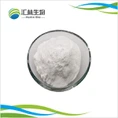1. Introduction
| Cagrilintide is a synthetic peptide-based compound currently under investigation in clinical trials. It is not approved for prescription use by any major regulatory authority (e.g., FDA, EMA). This article provides factual information based on publicly available research data regarding its mechanism, observed effects in studies, typical dosing patterns used in trials, and potential side effects reported in trials. Crucially, cagrilintide is an investigational drug only. |
Chemical Structure Depiction of Cagrilintide Click Image to PubChem |
2. What is Cagrilintide Peptide?
Cagrilintide is an investigational long-acting synthetic peptide analogue. Its structure is designed to mimic the activity of the naturally occurring hormone amylin, which is involved in metabolic regulation.
3. How Does Cagrilintide Work? - Mechanism of Action)
Cagrilintide functions by interacting with specific receptor pathways targeted by amylin. By binding to these receptors, it is understood to influence physiological processes potentially including:
- Satiety Signals: Influencing pathways in the brain associated with appetite regulation and promoting feelings of fullness (satiety).
- Gastric Motility: Influencing the rate of gastric emptying, slowing the movement of food from the stomach.
- Glucagon Secretion: Influencing the release of glucagon from the pancreas after meals.
This interaction with amylin receptor pathways is central to cagrilintide's investigational mechanism.
4. What is Cagrilintide Used For? (Observed Effects in Clinical Research)
Cagrilintide is being studied primarily for its potential role in weight management within specific participant groups. Results from clinical trials have documented changes in body weight among participants receiving cagrilintide, alongside lifestyle modifications, compared to those receiving a placebo. It is also being investigated in combination with other investigational or approved compounds, such as semaglutide (a GLP-1 receptor agonist), under the name CagriSema.
Key Points:
Research Phase: Findings are from controlled clinical trials.
Context Dependent: Results occurred under specific study protocols.
Individual Variation: Effects varied among participants within trials.
Investigational: These observations support research but do not imply approved benefits or uses.
5. Common Side Effects Of Capraglinide In Trials
Data from clinical trials report reactions associated with cagrilintide use, primarily related to the digestive system. These are consistent with the class of compounds it belongs to and often lessen over time. Commonly observed reactions include:
- Gastrointestinal: Nausea, vomiting, diarrhea, constipation, abdominal discomfort. These effects are frequently dose-dependent.
- General: Mild to moderate reactions potentially including headache, dizziness, fatigue, injection site reactions.
- Other Potential Reactions: As with similar compounds, potential for other effects is monitored.
The long-term safety profile is still being evaluated.
6. Typical Dosing Pattern in Clinical Trials (Cagrilintide Dosage)
Dosing regimens are strictly defined within clinical trial protocols and are not general recommendations. Trials typically employed a structured dose-escalation pattern to manage tolerability.
Cagrilintide Monotherapy (Representative Research Pattern):
| Week Range | Typical Dose Level (Representative Research Escalation) | Frequency |
|---|---|---|
| Weeks 1-4 | Initial Level | Once weekly |
| Weeks 5-8 | Intermediate Level | Once weekly |
| Weeks 9+ | Target Maintenance Level | Once weekly |
Cagrilintide in Combination Therapy (e.g., with Semaglutide - CagriSema): Trials investigating combinations like CagriSema use specific dose levels of each component, also typically involving escalation schedules for both peptides. These doses are unique to the research protocol and vary between studies.

Starting Dose (Cagrilintide Starting Dose): In monotherapy trials, the initial dose is typically the lowest level in the escalation schedule, designed to assess tolerability.
Critical Considerations:
- Investigational Use Only: These doses were used ONLY within specific clinical studies.
- Not Prescriptive: This is NOT a dosage guide for any use.
- Medical Supervision: Administered under strict medical supervision in research.
7. Comparing Cagrilintide and Semaglutide
Cagrilintide and semaglutide are distinct investigational or approved peptides with different primary mechanisms:
- Primary Mechanism: Cagrilintide primarily mimics amylin activity. Semaglutide primarily mimics GLP-1 activity.
- Research in Combination: They are being studied together (CagriSema) to explore potential synergistic effects on weight management by targeting both amylin and GLP-1 pathways.
- Stage: Semaglutide is approved for specific uses. Cagrilintide remains investigational.
8. Comparing Cagrilintide and Tirzepatide
Cagrilintide and tirzepatide are distinct peptides:
- Mechanism: Cagrilintide targets amylin receptors. Tirzepatide targets GIP and GLP-1 receptors.
- Research Stage: Tirzepatide is approved. Cagrilintide is investigational.
- Direct Combination Research: As of current knowledge, cagrilintide is primarily being studied in combination with semaglutide, not directly with tirzepatide in major trials. They represent different approaches.
9. Critical Considerations & Current Status
- Investigational Drug: Cagrilintide is NOT approved for any use.
- Clinical Trials Only: Available only to enrolled research participants.
- No Prescription: Cannot be prescribed.
- Uncertain Future: Approval not guaranteed; further research required.
- Safety Under Evaluation: Long-term safety is still being studied.
- Medical Supervision Essential: Use only within monitored trials.
- Not for Self-Administration.






